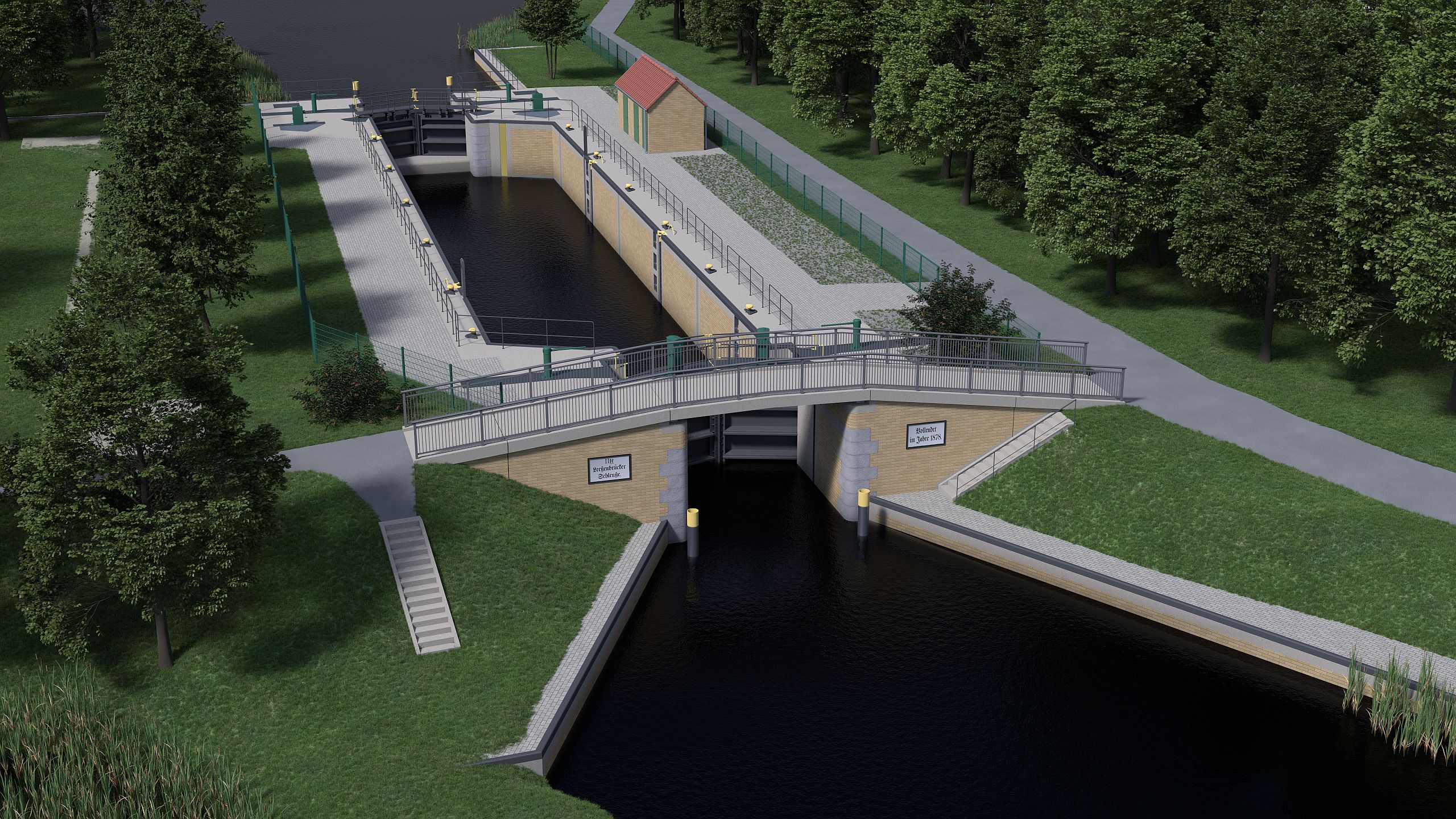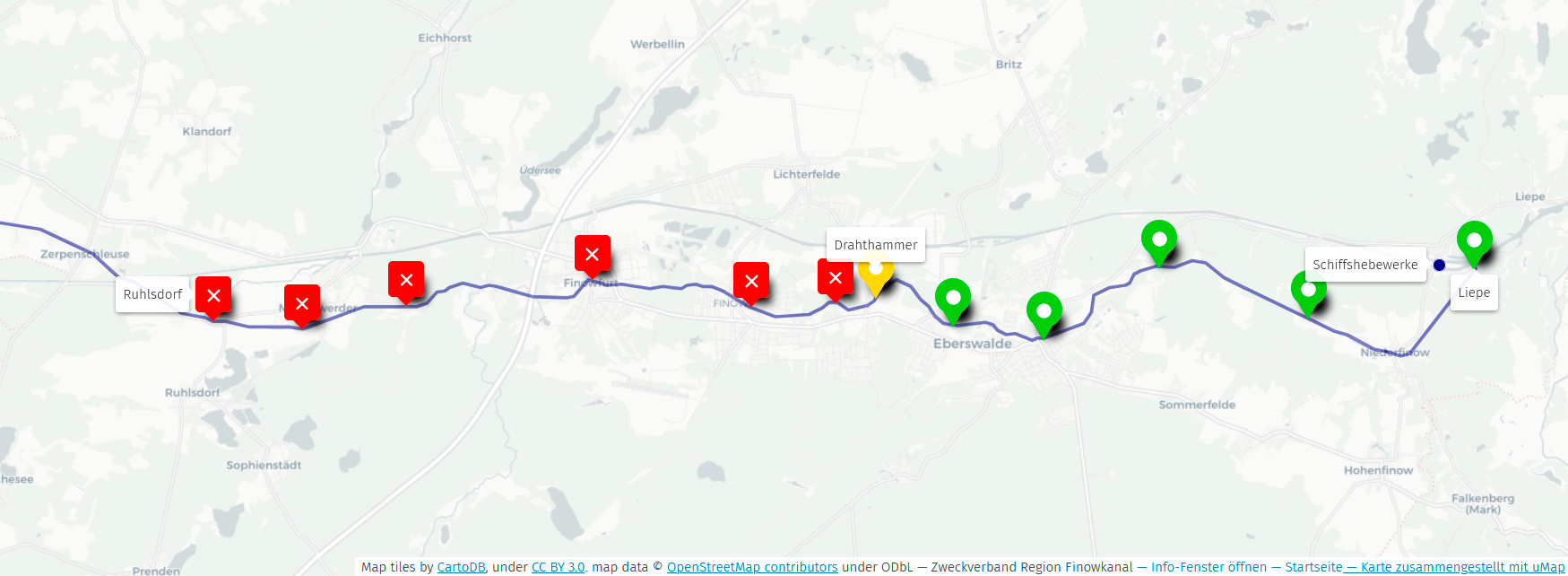After intensive preliminary work and negotiation, the Zweckverband Region Finowkanal is now rebuilding the first six of the twelve historic locks on the Finow Canal. This unique and historically significant infrastructure project ensures that the Finowkanal can be passed through by boat for the next century. The construction work on the first three locks in Ruhlsdorf, Leesenbrück and Grafenbrück began in the first quarter of 2023.
However, the construction work also means that the locks concerned will be closed during the construction period and the Finowkanal can't be passed all the way in the coming years. You can enter into the Finowkanal via the Liepe lock and you can boat as far as the Drahthammer lock (Eberswalde). You can reach the lock manager by telephone on 0151/72438871.
2025 following locks are closed:
Ruhlsdorf, Lesenbrück, Grafenbrück, Wolfswinkel, Schöpfurt, Heegermühle








